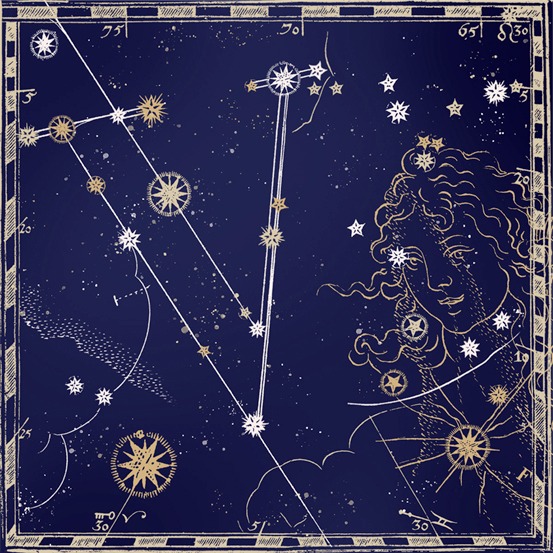Portugal with Love Issue
There are acronyms and then there's Mui Nobre e Sempre Loyal Cidade Invicta, an acronym we should all know. And print it on t-shirts. They wouldn't be a hit with tourists, of course (so what?). But maybe that's what we all need, and Porto too: secrets of our own. Shall we get to them?
To make this interesting, let's start by murdering, with more art than violence, any arguments that continue with the old, and therefore silly, rivalry between Porto (tripeiros) and Lisbon (mouros). Just so you know, a patron saint is a saint to whom a locality (or profession, association, animal, etc.) is dedicated, so that he or she becomes its protector. During the expulsion of the Moors (because there were Moors in Porto too), an act that was given the more sympathetic name of the Christian Reconquest, localities were dedicated to saints according to the date on which power was taken. I don't know what happened to make Porto's first patron saint the same as Lisbon's patron saint, São Pantaleão (not a pretty name, I don't know). What is certain is that his relics (bones) have been in Porto Cathedral since the 12th century. Which is also where (in addition to the city's coat of arms) the image of the city's true patron saint, Nossa Senhora de Vandoma (Our Lady of Vandoma), also known as Nossa Senhora do Porto (Our Lady of Porto), venerated for so many centuries that she became the patron saint of cities like Andrelândia, Senhora do Porto and Morretes in Brazil. De Vandoma because a Portuguese nobleman, Munio Viegas, led an armada of knights from Gascony (region of Bor- déus) who, landing at the mouth of the River Douro, fought the Moors who dominated the region of Porto. Among them was Dom Nónego, bishop of Vendôme (between Bordeaux and Paris), who later became bishop of Porto. Popular belief says, rather than historical data, that he had brought with him a copy of the image of Our Lady in Vendôme Cathedral (Vandoma, in Portuguese). But more difficult to conquer than the Muslims was the mentality of the Portuguese who, from time immemorial, celebrated the summer solstice through pagan rituals. The longest day of the year. The maximum fertility of the earth and the inherent prospect of good harvests (so let's carry leeks and olive sprigs on our heads). This occurs around the time when, by cunning and some art on the part of the Church, the days of the saints who have become popular are celebrated. In the case of St. John, who was also the son of a virgin (a strange phenomenon in those parts), who was also announced to his mother by the angel Gabriel supposedly Jesus' cousin, he is so important that he is the only saint in the hagiological calendar whose birth and death are celebrated twice. He's one of the most celebrated saints in Europe, but to get to the level of celebration he gets in Porto, you'd have to eat a lot of rojão. It's the city's biggest celebration, with crowds fulfilling a series of traditions and rituals that go far beyond the sardines, beer and wine consumed at the table. Leeks symbolize fertility and should be used by men to hit women on the head (and then hung behind the door), olive sprigs symbolize pubic hair and should be passed by women to men (no comment), hammers have replaced all this but, fortunately, not the balloons that light up the skies. And John looked on and found it all immeasurably beautiful, so he rested the next day, not least because it was a public holiday.
Let's dispel another myth... In Porto, swear words are not commas. It's unfair, slanderous and insulting to say that people from Porto are rude, even in the most obscene conversations with people from Ribeira, Miragaia, Baixa, Sé or during a chat with the “girls” (here, all women are eternal girls) from Bolhão. They're even called pataqueiras (slutty). That's why “carago” exists. It avoids another cheesy word and is used to end any sentence. Or at the beginning. Or in the middle. Nevertheless, it's easy to understand. Whether it's uttered when they want us to stay or when they want us to leave for somewhere that doesn't matter here, it doesn't build up that uncomfortable language barrier between the locals and the visitor that, we warn you, can exist. It's called exoticism. There are many of them around here. The kind you feel when you visit Thailand, for example. It can be foggy in the summer, you can take a bus that doesn't go the same way on the way back, you have to do the math when you ask what time it is (ten minus a quarter equals 21:45), having a fino or a cimbalino or a pingo (boy) or a pneu (sparkling water and a slice of lemon with sugar) or eating a snack (mixed snack) or a molete (carcass), sharing the café counter with a plumber and his reco and only finding out at the end that they are, respectively, a plumber and his dog. Hearing someone call someone else a morcon with an affectionate smile on their face and a hug afterward? Normal. Winding up the Vitorinos (running away), sending someone andor (b)violeta (sending away), locking the door with an aloquete (padlock), hanging your coat on a cruzeta (hanger), making a estrugido (stew) on a sertã (frying pan) to eat it in a malga (bowl), buying more comfortable chiantes (shoes), making a stew in a sertã (frying pan) to eat it in a malga (bowl), buying more comfortable chiantes (shoes), making a stew in a sertã (frying pan) to eat it in a malga (bowl), buying more comfortable i.e. a pair of sneakers and hearing someone tell you that you have to go home or you'll hear some good stuff from the stairs?That's normal.Don't try to fool anyone or you'll hear a (b)vai in Batalha and then, like “it's not even worth it”, an advance.Riding with your ass shaking (riding in a car) on the seat is a reason to put on a smile (smile), it avoids cramps (cramps) and it's always better than bending the spring (working) on a hot day (working), so it's better to fill up your mule (eat a lot) so you don't have a stump (in a bad mood) and, if possible, take a walk.It's also not a good idea to tell people what you think, because someone who's more of a brogue (rude) will immediately say Ó go to the store and that's it if you don't offer a slap on the wrist...If that happens, it's best to hit back at the speed of a pinch ball.Some basic survival rules?Don't make fun of the accent and know in advance that the Lisboner has the heaviest accent in the country, plus the bloody “tefóne”, “runião” and the horrible “treuze”, not to mention “coalho” (an animal with fur and big ears),“abalha” (an insect with fur and big wings) and “saxta-faira”, a day of the week that, were it up to the Orthographic Agreement, would be spelled as it is and would be “sêxta-fêira”, to see if the people of Lisbon would learn, once and for all, how to speak. Never assume that you're in a place where every dish, except Bacalhau à Brás, has a form of white rice at the end of the platter, let alone a francesinha.For the rest, you should always carry a jacket, even if it's been a hot day, change into a windbreaker to go to the beach, consider not going swimming because the sea is Meco all the way, follow the locals to their favorite restaurants and, finally, be wary of seagulls, from those that swarm in Ribeira to those that seem to be very calm in Serralves.They look the same as the ones in Terreiro do Paço, Costa Vicentina or the Algarve, but they're actually “Chicas Espertis Vulgaris”. a jacket in hand, even if it's been a scorching day, changing into a windbreaker to go to the beach, considering not going swimming because the sea is Meco cubed, following the locals to the restaurants you like and, finally, being wary of seagulls, from those that swarm in Ribeira to those that seem to be very calm in Serralves.They look the same as the ones in Terreiro do Paço, Costa Vicentina or the Algarve, but they're actually of the species “Chicas Espertis Vulgaris”.a jacket in your hand, even if it's been a scorching day, change into a windbreaker to go to the beach, consider not going swimming because the sea is Meco cubed, follow the locals to the restaurants of your choice and, finally, be wary of seagulls, from those that swarm in Ribeira to those that seem to be very calm in Serralves. They look the same as the ones in Terreiro do Paço, Costa Vicentina or the Algarve, but they're actually of the species “Chicas Espertis Vulgaris”.a jacket in your hand, even if it's been a scorching day, change into a windbreaker to go to the beach, consider not going swimming because the sea is a Meco cubed, follow the locals to the restaurants of your choice and, finally, be wary of seagulls, from those that swarm in Ribeira to those that seem to be very calm in Serralves.They look the same as those in Terreiro do Paço, Costa Vicentina or the Algarve, but they're actually the “Chicas Espertis Vulgaris” species.
Let's talk about eating. The food. Staying in Porto requires a stomach, in the best sense of the word and not in the other. We're not going to agree here. The fame of the francesinha has internationalized this star of the city's gastronomy and turned it into a bastion that, unfortunately, has relegated a whole treasure chest to the background. It's a relatively recent dish, a recreation of the French croque-monsieur, and the fact that it's characteristic of Porto's restaurants doesn't mean that it's traditional. To be worthy of such an epithet, it would have to be something that was part of the collective imagination when it came to the wonderful cooking at Grandma's house. Like the caldo verde made in a cast iron pot and served in a clay pot, with lots of garlic, a slice of salpicão and a thousand strands of cabbage dancing among the velvety mashed potatoes, accompanied by a moist slice of Avintes bread and red wine drunk from another pot. Or the tripe, the dish that earned these people their nickname because legend has it, Prince Henry the Navigator supplied the ships that were leaving for Ceuta with all kinds of properly salted meat, leaving them only the “offal”. The creative genius of the people did the rest, adding other salted meats, sausages, and white beans, thus creating a dish that is now more than half a millennium old. In my opinion, the epitome of a proven Porto recipe lies in the creation of José Luís Gomes de Sá Júnior, a cod dealer with a warehouse in Rua do Muro dos Bacalhoeiros, in Ribeira, who sold (or offered, as they say) the recipe to his colleague and best friend João, the cook at Restaurante Lisbonense, which at the time was located in Travessa dos Congregados, in the distant 19th century. And because we're generous, the original recipe, as it appears in his own manuscript, is this: “Take the soaked cod and pour it into a casserole dish. Then cover everything with boiling water and cover it with a thick cloth or a piece of blanket and leave it like this, without boiling, for 20 minutes. Next, the cod that is in the casserole, which should be two kilos heavy raw, is removed of all the bones and made into chips and placed in a deep dish, covered with hot milk and left to infuse for an hour and a half to two hours. Then, in an ovenproof dish, pour three deciliters of the finest olive oil (this is essential), four cloves of garlic and eight onions to brown. Have two kilos of potatoes (cut apart with the skin on), peel them and cut them into slices about a centimeter thick, then add the potatoes and the cod chips, which have been removed from the milk. Then put them in the same dish in the oven and let everything boil for ten to fifteen minutes. Serve on the same platter with large black olives, which are very good, plus a bunch of finely chopped parsley and slices of hard-boiled egg. It should be served hot, very hot.”
And if we're going to talk about the gastronomic basics of the northern capital, away from the tourist crowds, we should also mention the original cachorrinho from Cervejaria Gazela and the pizzas (and cultural program) from Maus Hábitos, A Cozinha do Manel (Rua do Heroísmo, Bonfim), Nem Carne Nem Peixe (near the Town Hall), by David Jesus from Setubal and, for a memorable access to the city's haute cuisine, the starred Euskalduna Studio (Rua Santo Ildefonso), by chef Vasco Coelho Santos. To make the repast easier to digest, it's best to have a drink at the Terraplana Café (Avenida Rodrigues de Freitas, Bonfim) and perhaps finish off with a dance at Plano B or Passos Manuel. To cut a long story short, little did the Romans know when they came here to conquer, build roads, and pipelines, in short, to develop land they considered barbaric and where, according to bad language and the pen of some Greek scribes, even cannibalism was practiced, that by building a port (portus) in Cale, a small Celtic village near the mouth of the Douro, which was the obligatory passageway between Olissipo (Lisbon) and Bracara Augusta (Braga), they would baptize the future country. But Portus Cale was taken in 456 by Theodoric II, king of the Visigoths, who ruled the city for almost 300 years until the Moors arrived in 716. Their stay was not long. Shortly afterward, King Alfonso I conquered it, not our king, but the king of Asturias, but the city became so deserted that, in 880, his grandfather Alfonso III the Magnificent, the last of the Asturian kings, had to order its repopulation. It worked and in 1096, King Afonso VI of León married his daughter Teresa to Henry of Burgundy, granting them the Condado Portucalense, with its capital in Porto. As can happen to any more or less modern couple, they were unlucky enough to have a problem child who, in 1138, won the battle of Ourique and, five years later, this Afonso Henriques won Portugal's independence. From then on, it was well known that Porto supported the Master of Avis; Then came the discoveries and all the fuss that also energized Porto to become a leader in the Portuguese shipbuilding industry - the brave city supported the revolt of 1640, which put an end to Spanish rule (which nevertheless represented a great growth for the metropolis to the point where the 18th century is considered its golden century) - and in 1756, the people of Porto rose up against the Marquis of Pombal, who wanted to create a British monopoly on Port wines. This was followed by the Napoleonic invasions, the Spanish takeover, the retaking by General Soult and the city's revival, with great architectural wonders being born as a result of the economic engine that was Douro wines. The city was unstoppable, the cradle of a great cultural and artistic movement that characterizes it to this day, guided by the struggle for civil rights that would lead to the military uprising that ended the absolute monarchy and gave way to a liberal constitution. History tells of the bravery of the people and some curiosities, such as the one about a certain monument, famous, touristic and photogenic like few others, which was once the bridge with the largest wrought iron arch in the world and which, no, was not designed by Gustave Eiffel. Its name is the Luis I Bridge. It doesn't have the Dom because, on October 31, 1886, Dom Luís I didn't attend its inauguration. It's clear that the people of Porto considered this offensive and, as punishment, “there's no Dom or half Dom here”, it's just Luís and he's very lucky not to be Luizinho. But the city's most photographed monument isn't enough to define it. Neither is the fact that its historic center is a UNESCO World Heritage Site. Or the fact that it has one of the longest avenues in the country. Or the fact that D. Pedro IV had a square in Lisbon (which they call Rossio), but his heart was literally in Porto. Or the fact that the Parque da Cidade, the country's largest urban park, which starts on Avenida da Boavista and spreads out into the Atlantic Ocean, is a rare thing in the world. You have to live it to feel it. After that, any epithets will be few.
Translated from the original in Vogue Portugal's "Portugal With Love" Issue, published June 2024. Full stories and credits in the print issue.
Most popular



Relacionados




 (1).png)
